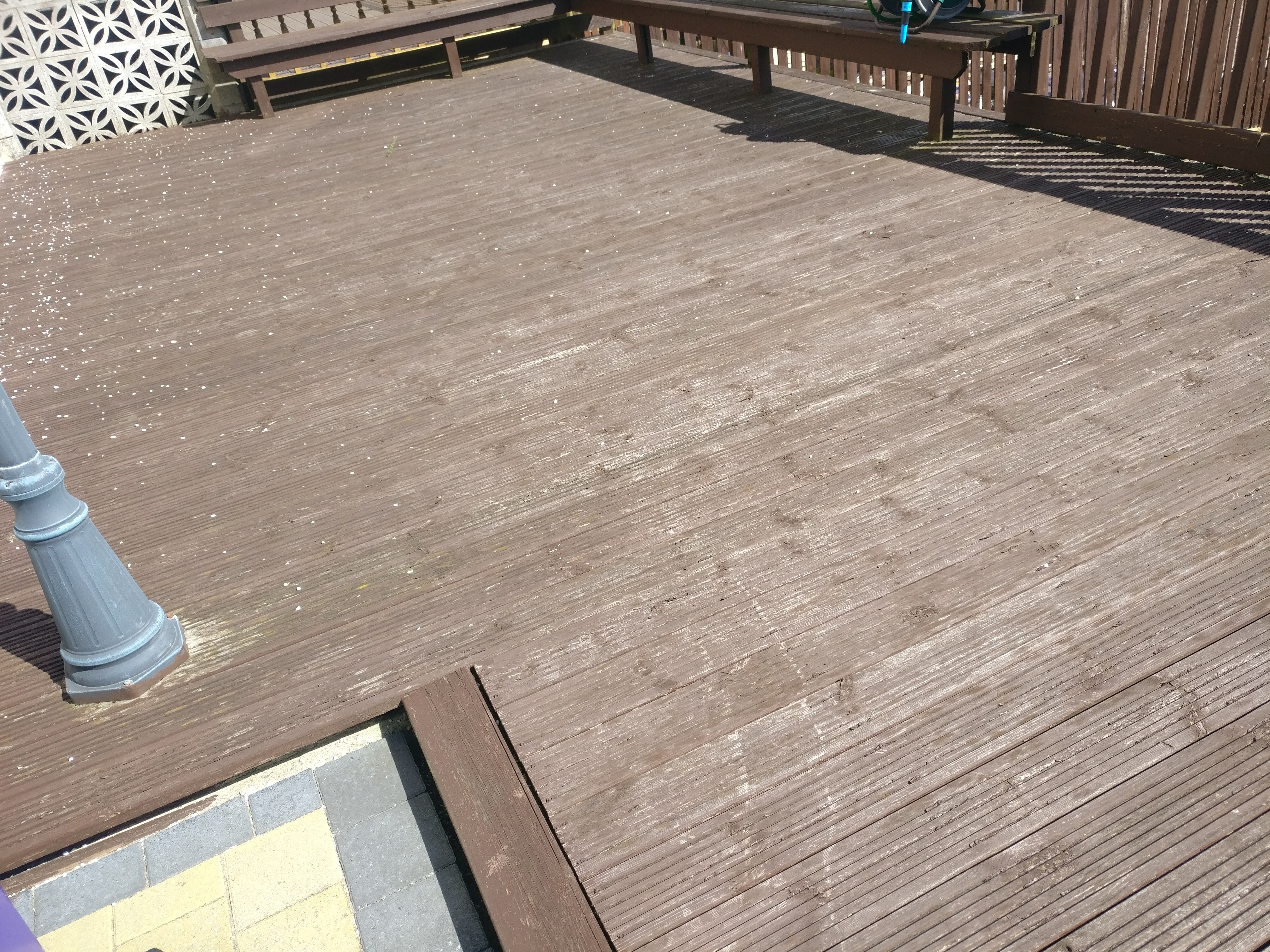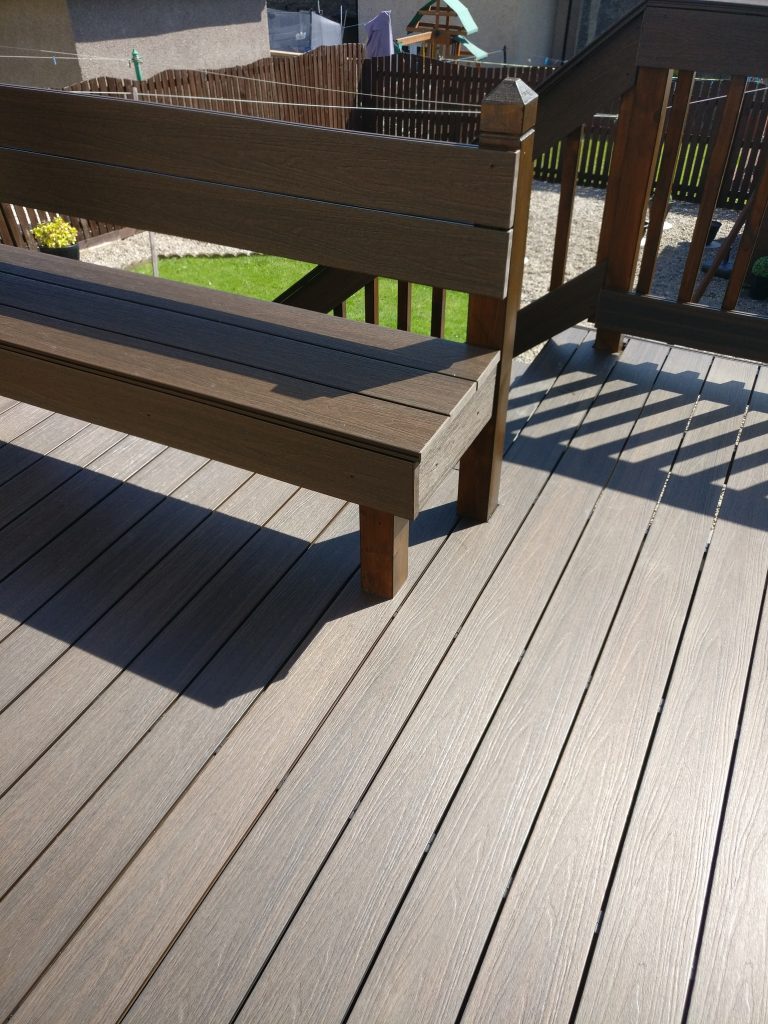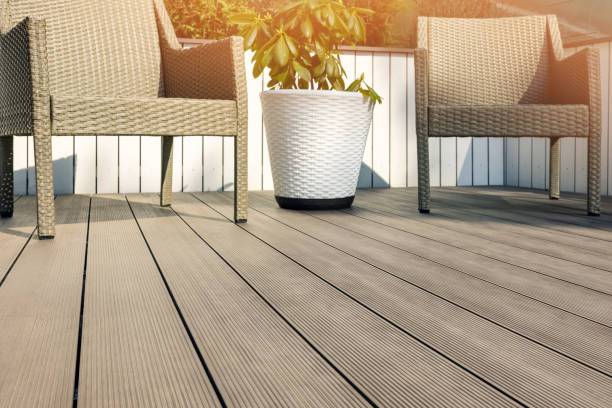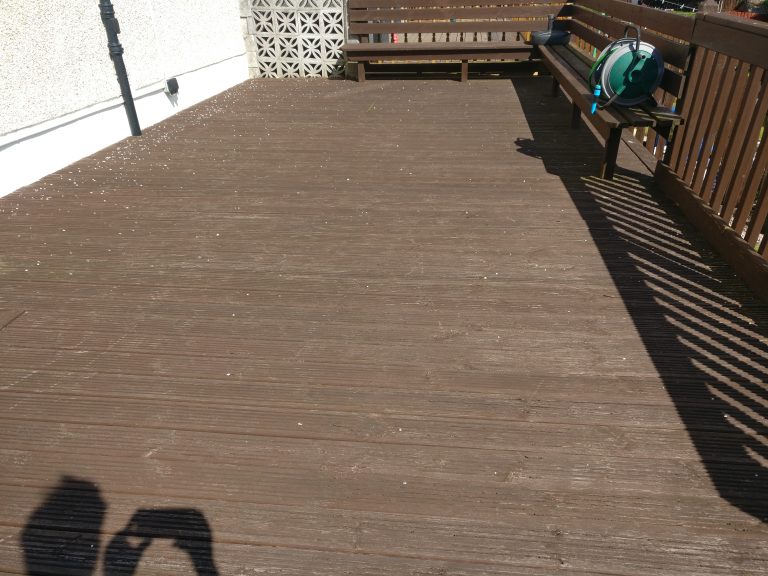Composite decking has become an increasingly popular choice for outdoor living spaces, offering a durable and low-maintenance alternative to traditional wood decking. In this comprehensive guide, we will explore the key differences between composite decking and traditional materials, including their material composition, maintenance requirements, and durability.
We will address the burning question: does composite decking get hotter than other materials, such as concrete and wood? We will delve into the factors that contribute to the heat absorption of composite decking, including color, material density, and sun exposure. We will discuss the potential risks associated with hot composite decking and provide practical tips on how to keep composite decking cool, such as choosing lighter colours, using shading techniques, and considering alternative materials.
So, if you’re considering composite decking for your outdoor space, or simply want to learn more about this popular material, read on to discover all you need to know about composite decking and its heat absorption properties.
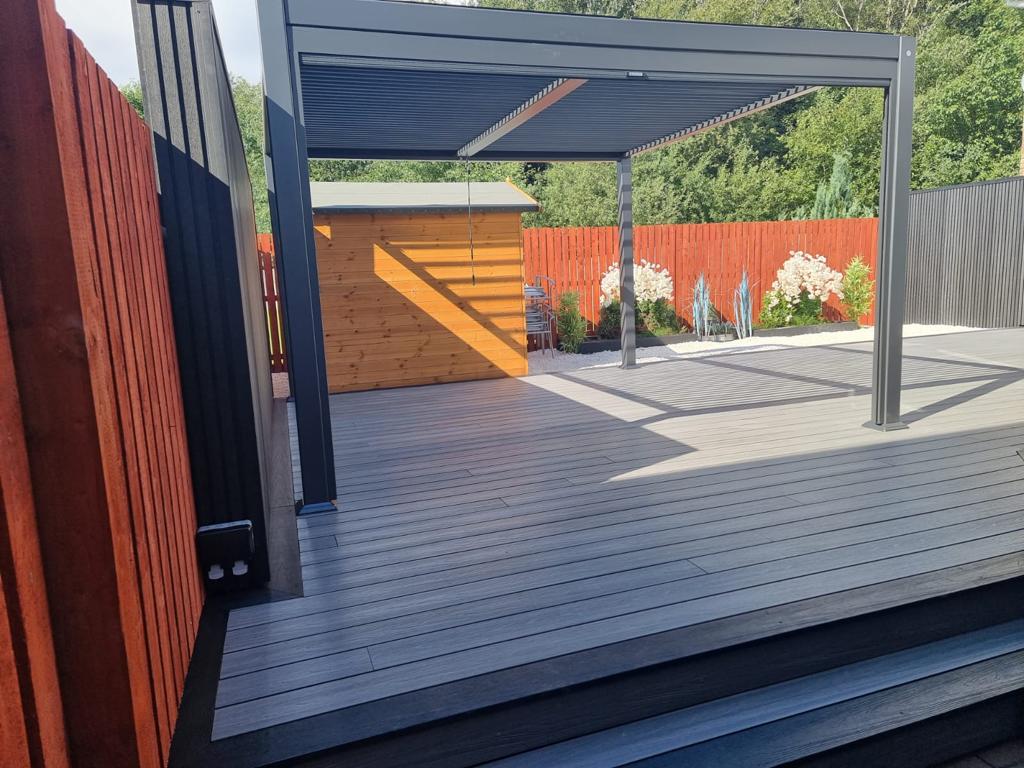
What Is Composite Decking?
Composite decking is a modern outdoor flooring solution that offers a sustainable and eco-friendly alternative to traditional materials such as wood or concrete.
It is made from a combination of recycled wood fibres, plastics, and a binding agent, creating a durable and low-maintenance material. The installation process is relatively straightforward, often resembling the installation of traditional wooden decking. Unlike natural wood, composite decking does not require regular sanding, staining, or sealing, making it a cost-effective choice.
Its eco-friendly nature stems from the use of recycled materials, reducing the demand for virgin timber and minimising waste. Composite decking provides a long-lasting, visually appealing, and environmentally responsible outdoor flooring option.
How Is Composite Decking Different From Traditional Decking Materials?
Composite decking differs from traditional materials like concrete in several key aspects, including its enhanced durability, aesthetic design options, and superior resistance to environmental factors such as UV and fire.
Material Composition
The material composition of composite decking plays a crucial role in determining its thermal conductivity, moisture resistance, water resistance, and compliance with building codes and regulations.
It typically consists of a blend of wood fibres, recycled plastics, and binding agents that contribute to its durability and weather resistance. Composite decking is designed to withstand extreme temperatures, making it an ideal choice for outdoor environments. Its resistance to moisture and warping makes it a low-maintenance option for decks and patios. Many composite decking materials are engineered to meet strict building codes, ensuring safety and structural integrity in construction projects.
Maintenance Requirements
Composite decking offers a cost-effective and low-maintenance outdoor flooring solution that withstands various weather conditions, environmental factors, and provides enhanced slip resistance for added safety.
It requires minimal upkeep compared to traditional wood decking, as it doesn’t need staining, sealing, or painting to maintain its appearance. This type of decking is highly durable, resistant to fading, and won’t splinter or rot, even in humid or coastal areas.
Its resilience against moisture, UV rays, and mould makes it an ideal choice for outdoor spaces. The slip-resistant surface ensures safety, particularly in areas prone to rain or high foot traffic.
Durability and Lifespan
The durability and lifespan of composite decking make it a valuable addition to outdoor living spaces, enhancing property value and offering longevity through efficient installation methods and resilience to environmental factors.
These decking materials are designed to withstand harsh weather conditions, such as extreme temperatures, moisture, and UV rays, without warping, fading, or rotting. This resilience not only reduces maintenance costs but also contributes to the sustainable aspect of composite decking, as it reduces the need for frequent replacements.
The efficient installation methods of composite decking save time and labour, providing homeowners with a durable and long-lasting outdoor surface that adds to their property’s overall appeal and value.
Does Composite Decking Get Hotter Than Other Materials?
One common question revolves around whether composite decking gets hotter than other materials, requiring a comparison of its heat absorption with respect to different temperatures, weather conditions, and climate variations.
This aspect is particularly significant as the thermal properties of composite decking can greatly influence its performance in various settings. Understanding how it responds to temperature changes and heat absorption is crucial for homeowners, architects, and builders, especially in areas with extreme weather conditions.
The design, composition, and colour of composite decking materials play a significant role in their ability to mitigate excessive heat build-up, making them suitable for diverse climatic environments.
Comparison to Concrete
When comparing the heat characteristics of composite decking and concrete in terms of heat retention and thermal expansion, it’s essential to consider their performance in different environmental conditions and their respective levels of slip resistance.
Composite decking often has a lower heat retention compared to concrete, making it more comfortable to walk on during hot days. Its thermal expansion rate is generally lower, reducing the risk of cracks and damage.
In terms of environmental suitability, composite decking is often made from recycled materials and can withstand varying weather conditions. It offers good slip resistance, especially when textured for enhanced grip.
Comparison to Wood
In contrast to wood, composite decking exhibits superior heat absorption properties, offering a maintenance-free solution that withstands diverse climates and provides enhanced water resistance.
This innovative decking material is engineered to withstand intense heat without warping or splintering, making it an ideal choice for outdoor spaces. Its durable nature ensures that it remains unaffected by fluctuating temperatures, making it suitable for both hot and cold climates.
The composite material’s water resistance means it is highly resistant to moisture damage, preventing issues such as rot and decay commonly associated with traditional wood decking.
What Factors Contribute to the Heat Absorption of Composite Decking?
Several factors significantly contribute to the heat absorption of composite decking, including its colour, material density, and the extent of sun exposure it receives.
Colour plays a vital role in heat absorption, with darker hues absorbing more heat compared to lighter shades. Material density affects heat retention, as denser composite decking tends to hold more heat. The amount of sun exposure directly impacts the temperature of the decking, with prolonged exposure leading to increased heat retention. Considering these factors is essential for homeowners looking to maximise comfort and usability of their outdoor composite decking areas.
Colour
The colour palette of composite decking not only contributes to its aesthetics but also plays a role in its integration with landscaping materials, whilst offering UV resistance for long-term durability.
The visual appeal of composite decking colours enhances outdoor spaces, blending seamlessly with natural surroundings or complementing other elements in the landscape design. The UV resistance of these colours ensures that the decking maintains its vibrancy and does not fade over time, adding to its longevity and reducing maintenance requirements. This combination of aesthetic versatility and practical durability makes colour a crucial factor in choosing composite decking for outdoor spaces.
Material Density
The material density of composite decking impacts its heat retention properties, fire resistance, and safety considerations, making it an essential factor in evaluating its thermal performance. This is particularly crucial when assessing the potential for heat build-up in outdoor spaces.
Higher material density can result in better heat retention, which can create a comfortable environment during cooler evenings. The fire resistance of composite decking is closely tied to its material density, as denser materials tend to withstand fire and heat exposure more effectively. From a safety perspective, understanding the relationship between material density and structural integrity is vital for ensuring the long-term security of composite decking installations.
Sun Exposure
Sun exposure directly affects the thermal expansion, weather resilience, and water resistance of composite decking, making it a critical consideration for its overall performance in outdoor environments.
It is important to note that prolonged exposure to sunlight can lead to increased thermal expansion of the decking material, potentially causing warping or buckling. UV rays can degrade the surface of the decking, compromising its weather durability over time.
Sun exposure can impact the water-resistant properties of composite decking, as prolonged exposure to heat and sunlight can potentially weaken its resistance to moisture penetration. Understanding these effects is crucial for ensuring the longevity and performance of composite decking in outdoor settings.
What Are the Potential Risks of Hot Composite Decking?
Hot composite decking presents potential risks such as burn hazards, elevated heat retention in surrounding areas, and the need to comply with safety regulations for outdoor constructions.
Burn hazards can occur when touching the hot surface of the decking, especially during summer months or in sunny climates. The heat retention of composite decking can create discomfort for individuals walking barefoot or sitting on it.
Safety regulations must be followed to ensure proper installation and use of hot composite decking to mitigate these risks and create a safe outdoor environment for everyone.
Burn Risk
The burn risk associated with hot composite decking necessitates an evaluation of its fire resistance, environmental implications, and compliance with safety regulations to mitigate potential hazards.
This evaluation is crucial as hot composite decking materials, when exposed to high temperatures, pose a heightened risk of igniting and spreading fire. Considering the environmental impact, it’s essential to assess the sustainability of these materials and their potential emissions.
Ensuring compliance with safety regulations is vital for limiting the potential dangers associated with hot composite decking, protecting both property and individuals from fire-related incidents.
The retention of heat in the surrounding areas
The heat retention capabilities of composite decking may impact the surrounding areas, requiring attention to climate variations and the maintenance of slip resistance for enhanced safety.
This becomes especially crucial in warmer climates, where the decking material’s ability to hold heat can significantly raise the temperature of the surrounding space, potentially creating discomfort for users. The maintenance of slip resistance is vital for ensuring safe usage, especially in areas prone to moisture or precipitation, where the decking’s heat retention may affect its ability to repel water and maintain traction.
How to Keep Composite Decking Cool?
Ensuring the cooling of composite decking involves strategic approaches such as opting for lighter colours, implementing effective shading techniques, and considering alternative materials with enhanced thermal properties.
Lighter colours play a crucial role in reducing heat absorption, thus helping to maintain a cooler decking surface. By selecting light hues such as beige, grey, or tan, the decking can reflect more sunlight and minimise heat retention. Shading methods such as pergolas, umbrellas, or awnings provide relief by blocking direct sunlight.
Exploring alternative materials like PVC or capped polymer decking can offer superior thermal performance, reducing the overall heat buildup and contributing to a more comfortable outdoor space.”
Choose Lighter Colours
Selecting lighter colours for composite decking not only enhances its aesthetic appeal but also contributes to improved climate suitability and UV resistance for long-term performance.
These lighter shades are particularly beneficial in warmer climates as they reflect sunlight and reduce heat absorption, resulting in a cooler deck surface for bare feet. The UV resistance of lighter colours assists in maintaining the decking’s original appearance by minimising fading or discolouration caused by prolonged sun exposure. The combination of visual appeal, temperature regulation, and durability makes lighter-coloured composite decking a practical and stylish choice for outdoor spaces.
Employ Shading Techniques
Implementing effective shading techniques for composite decking helps reduce heat absorption, enhances its weather resilience, and may involve specific considerations during the installation process.
This not only improves the comfort of the decking surface for bare feet, but it also minimises the risk of overheating during hot weather. By reducing heat absorption, the decking material is less prone to expansion and contraction, thereby increasing its durability in various weather conditions.
The choice of shading techniques can impact the installation process, as certain designs may require additional support or modifications to ensure proper fit and stability.
Consider Alternative Materials
Considering alternative materials with superior heat dissipation properties provides viable options for addressing the thermal challenges of composite decking, promoting environmental suitability and enhanced slip resistance.
These innovative materials offer promising solutions to combat the elevated temperatures often associated with traditional composite decking. Their ability to efficiently dissipate heat contributes to a more comfortable surface for barefoot walking and lounging, thus enhancing the overall outdoor experience. Their environmentally-friendly characteristics align with sustainability goals, making them an appealing choice for eco-conscious consumers.
The improved slip resistance provided by these materials ensures a safer and more secure deck surface, reducing the risk of accidents and injuries, especially in wet conditions.

